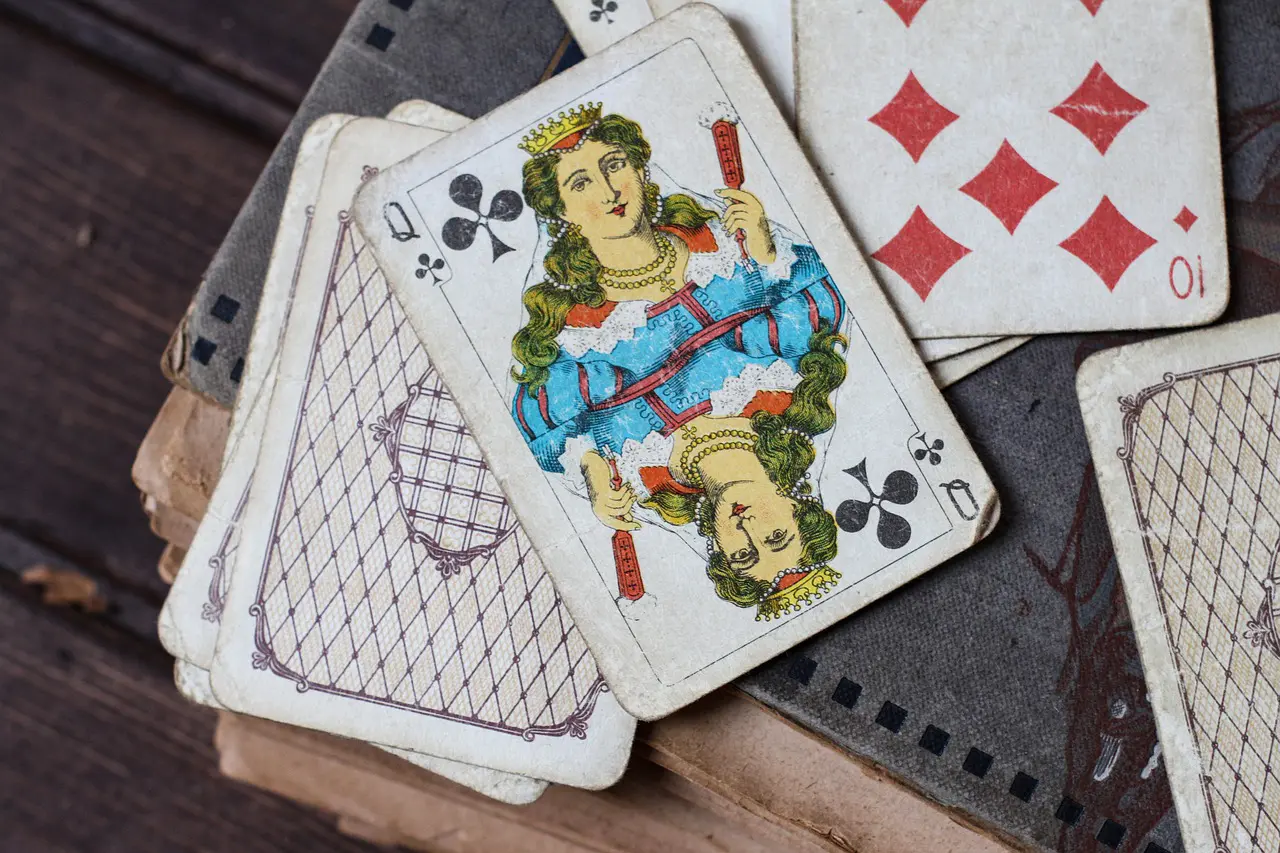

Hearts, diamonds, clubs, spades on 52 pieces of card. These symbols are so familiar to us these days. But where did they come from? Let's dive into the playing cards history books and discover the secrets behind the deck.
Much like the poker chip and the poker table, you might be surprised about you’ll find out!
It all started around 1000 AD in China. This is when experts believe the first playing cards were developed. Within a few hundred years, they started to spread and were widely used in the Islamic Mamluk dynasty in Egypt.
It's said that merchants going between Egypt and Europe were crucial in the context of playing cards history. Merchants often bring new technologies, and even customs, and that's how the deck of cards arrived.
They probably arrived via Italy or Spain, but the cards were first reported in France in 1377.
A lot of tinkering can happen in 100 years. And in the first 100 years of playing cards in Europe, suits were firmly established. The Germans had hearts, bells, acorns and leaves on their cards. By 1480, the French derived their own suits. Hearts, diamonds, clubs and spades. Although, fun fact, before the bells became diamonds, there was an interim period where they were commonly crescents.
Want another fun fact? The French were also trailblazers by including a female face card. In Mamluk, Latin and German cards, they had three male face cards. However France was first to introduce the Queen. Other cards followed suit in time.
Now all this talk of the French cards has probably got you thinking the cards we play with today are most closely related to those. And in some ways, you'd be right.
But the design we know, at least the ones most commonly used in the English-speaking world, are called English pattern cards. They take the concept of the French playing cards history, but put their own spin on it.
We can see that this pattern dates back to 1516.
Up until 1860, cards only had one face per card. However, after that point, double headed cards became the norm.
Indices, otherwise known as the small number or letters in the corner of playing cards, are damn handy. Especially when you’re playing hold’em and you just want to take a little peep.
But, surprisingly, they weren’t always there. It wasn’t until around 1880 that this playing cards history innovation came into play. And then fast forward a few decades, playing cards started to take on all sorts of shapes, themes and sizes.
Now that you've got a little insight into playing cards history, maybe it's time to start playing cards! If you're looking for a good online poker room, we've got just the suggestion. Bet365 has got a great range of cash game tables and tournaments, to keep every type of player happy.
Plus, new players can get their hands on this juicy bet365 bonus code.
Bet365 Review ⊕ Min Deposit: £5 ⊕ Expiry: 30 days ⊕ Min Odds: 1/5 (1.20)
William Hill Review » ⊕ Min £10/€10/$10 stake ⊕ Expiry: 30 days ⊕ Min Odds: 1.5
GG Poker Review » ⊕ Min Deposit: £10 ⊕ Limited period ⊕ $1 for ever $ in Rake

All contents are ©
Bet365 Bonus Code, Sports, Casino and Poker Sign up offers and News
18+ Worried about your gambling?
Gamcare - When the fun stops – STOP!